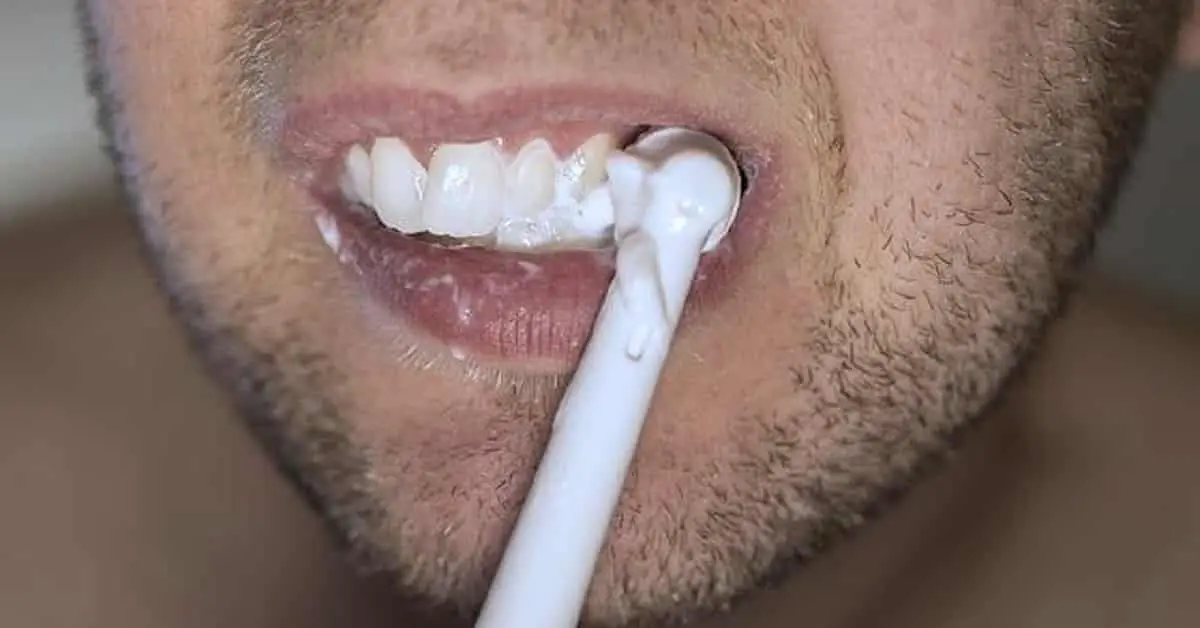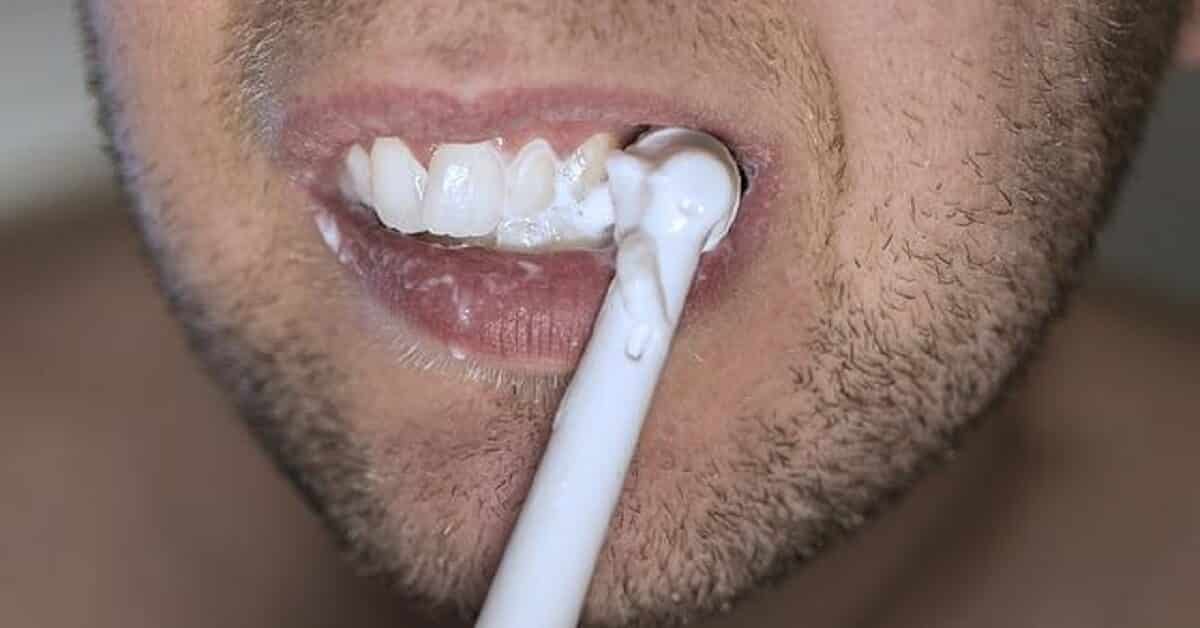
Many health-conscious users are inquiring online about how many calories are in toothpaste and what happens if you swallow toothpaste.
Judging from the inquiries, some people counting calories are concerned that their daily use of toothpaste adds significantly to their daily calorie intake (Find out how many calories are in toothpaste here).
The sweet taste of many popular brands might have raised concerns among diabetics that they are high in empty calories. The concern persists probably because most toothpaste packaging don’t show nutrition facts information.
Toothpaste packaging only show information about medicinal and non-medicinal ingredients and directions on how to use. They also include a warning not to swallow and to keep the preparation out of the reach of children.
The absence of a nutrition facts label showing the calories in toothpaste leaves many health-conscious consumers asking questions such as: Does toothpaste have calories? (follow link to learn more).
Many also want to know how harmful it is to swallow toothpaste.
If you’ve also been wondering whether there are calories in toothpaste, how many calories are in it, or whether it is safe to swallow toothpaste, we have all the answers to your questions.
Shop (free shipping)
You may view our entire collection of oral hygiene products here.
Contents
Does toothpaste have calories?
Most toothpaste ingredients don’t have calories
Some ingredients have calories
Calculation: Calories in toothpaste
What happens if you swallow toothpaste?
Is fluoride in toothpaste toxic?
–Fluoride toxicity: Dental fluorosis
–Fluoride toxicity: Skeletal fluorosis
How much toothpaste should I use?
How much toothpaste can kill you?
What happens if you eat a tube of toothpaste
Fluoride overdose symptoms: Acute toxicity
What to do in case of fluoride poisoning?
Does toothpaste have calories?
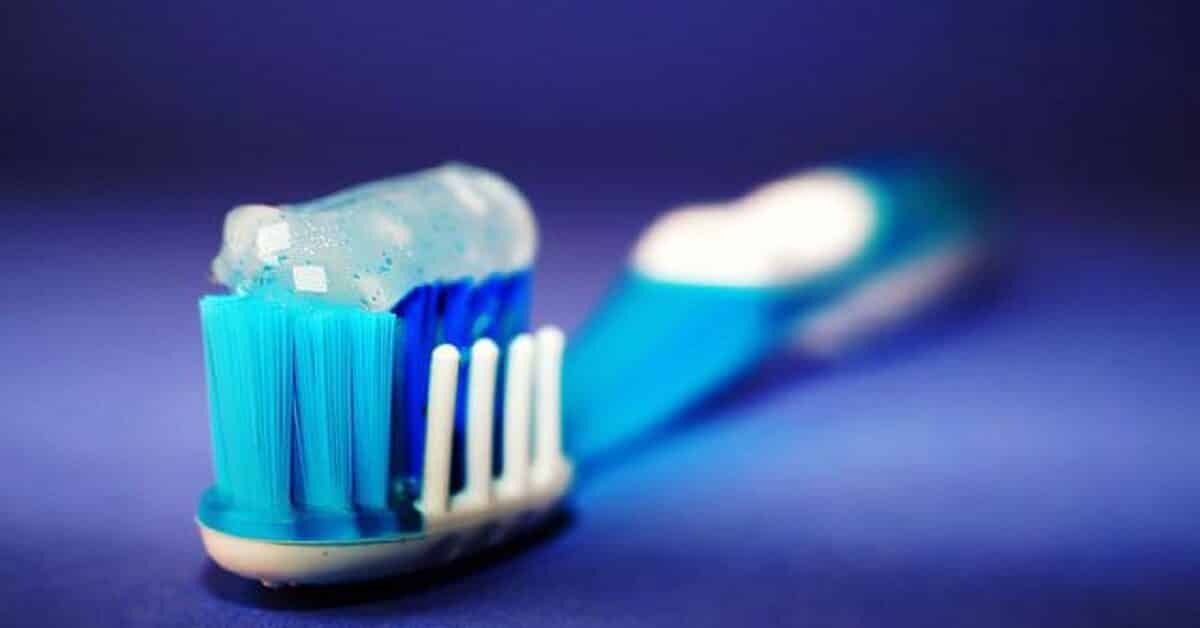
Yes, toothpaste has calories.
Our calculations show (see Calculation: Calories in toothpaste here) that, depending on the formulation, standard dentifrices may have low to medium calories.
The average amount of toothpaste (0.25-1g) the average individual uses daily probably contains about 0.25-3 calories. That amount is too small to contribute significantly to daily energy intake. It is also likely not enough to significantly raise blood glucose levels in diabetics.
For perspective, the average person burns about 75 calories/hour (1.25 calories/minute) sitting quietly watching TV.
An adult American woman weighing 78kg (172 pounds) burns 63-78 calories per hour while sleeping (1.05-1.3 calories/min).
However, you should never swallow toothpaste while brushing because it contains potentially toxic ingredients. These ingredients could harm your health and even endanger your life.
The linings of your mouth (the oral mucosa) do not absorb significant calories from toothpaste. Provided you do not swallow substantial amounts, you should not be concerned about the calories in toothpaste or harm due to the toxic ingredients.
You may read about what happens if you swallow toothpaste here.
Calories in toothpaste: Ingredients

To calculate how many calories are in toothpaste, we first consider the ingredients and proportions (wt%).
Because the exact composition varies between types of dentifrice and manufacturers, several sources quote different formulations for standard toothpaste products.
For instance, the Crest+Oral-B Dental Care website states that solvents and humectants (such as glycerol, sorbitol, and propylene glycol) typically constitute 75% of the formulation.
Oyewale (2004) reported that the moisture (water) content of dentifrice brands ranged from 20% to 39%, with 85% of the samples having moisture levels less than 29 wt%.
Moharamzadeh (2017) reported the following percent composition (by weight):
- Water (as solvent): 20-40% (water has zero calories)
- Abrasives (aluminum hydroxide, calcium hydrogen phosphates, calcium carbonate, silica, and hydroxyapatite): 50%
- Synthetic detergents or surfactants: 0.5%–2%
- Fluoride (usually in as sodium fluoride, Stannous fluoride, and sodium monofluorophosphate): 1450 ppm
Reynolds (1994) listed the following as the “typical” composition of dentifrices (Read more about toothpaste ingredients here):
- Abrasives: 10-40%
- Humectants: 20-70%
- Water: 5-30%
- Binder: 1-2%
- Detergent: 1-3%
- Flavor: 1-2%
- Preservative: 0.05-0.5%
- Therapeutic agent: 0.1-0.5%.
Most toothpaste ingredients don’t have calories
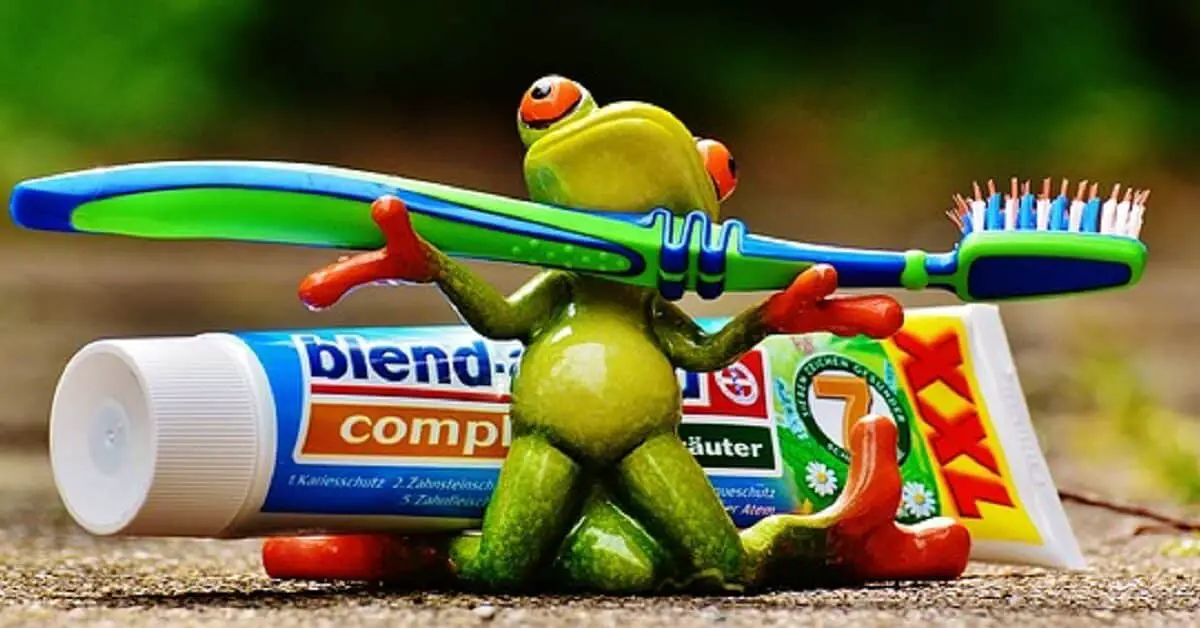
Most toothpaste ingredients are naturally-occurring and synthetic chemicals that do not contain nutritionally available energy.
While you may be able to get minerals, such as fluoride, phosphate, calcium, potassium, sodium, and magnesium, from toothpaste, you can’t get calories from ingredients such as:
- Fluorides: Sodium fluoride.
- Abrasives: Aluminum hydroxide, calcium hydrogen phosphates, calcium carbonate, silica, and hydroxyapatite
- Detergents such as sodium lauryl sulfate (SLS)
- Antibacterial agents (such as) triclosan or zinc chloride
- Flavors: Spearmint, peppermint, and wintergreen
- Re-mineralizers: Hydroxyapatite nanoparticles and calcium phosphate
- Antisensitivity agents: Strontium chloride and potassium nitrate
Some toothpaste ingredients have calories
Some toothpaste ingredients have calories.
Toothpaste humectants, such as glycerol (glycerin), propylene glycol(PG), xylitol, and sorbitol, have calories.
Glycerol, xylitol, sorbitol, and propylene glycol belong to a class of chemicals known as sugar alcohols or polyols.
According to Freeman and associates (2004), polyols are hydrogenated carbohydrates that are incompletely absorbed in the small intestines.
Polyols affect postprandial (post-meal) blood glucose levels in diabetics and non-diabetics.
However, some studies suggested they cause a lower glycemic response than simple sugars, such as glucose, fructose, and sucrose.
Thus, FDA regulations recommend that nutritional facts labels count the calories in polyols as part of total carbohydrates as shown in Table 1:
| Polyol (Sugar alcohol) | kcal/g |
| Sorbitol | 2.6 |
| Mannitol | 1.6 |
| Maltitol | 3.0 |
| Lactitol | 2.0 |
| Xylitol | 2.4 |
| Erythritol | 0.2 |
| Isomalt | 2.0 |
| Hydrogenated starch hydrolysates | 2.1 |
| Glycerin | 4.3 |
| Propylene glycol | 4.0 |
Calculation: Calories in toothpaste
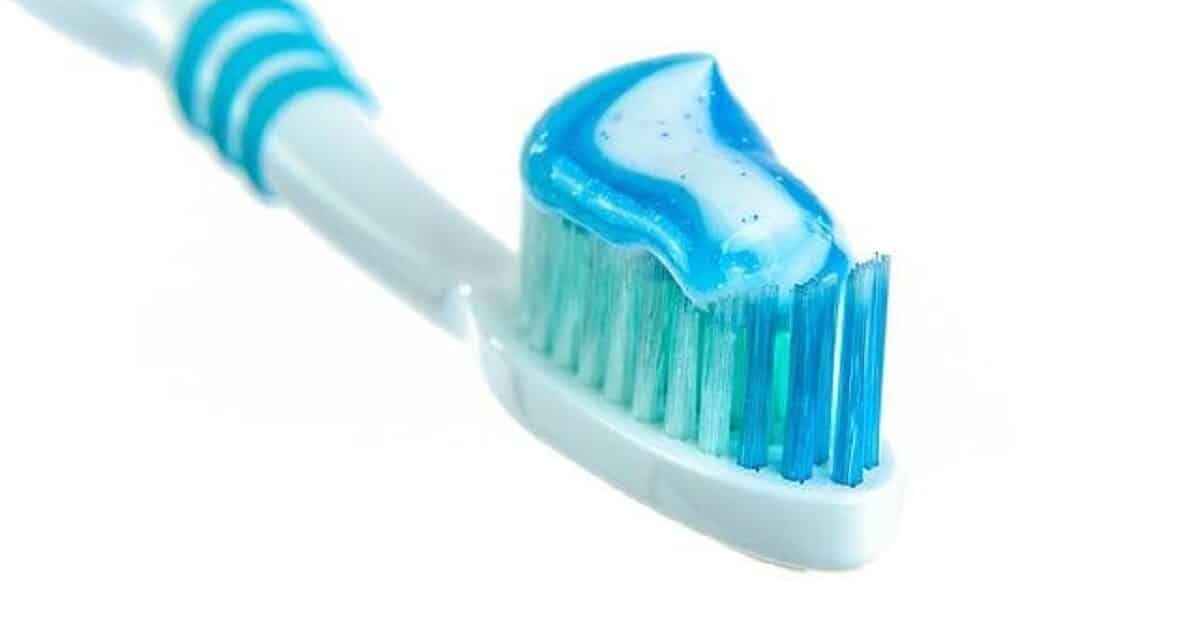
Summary: Toothpaste may contain 0.5 cal/g to 3 cal/g, depending on the formulation (see calculation below). The recommended pea-sized application of toothpaste for older children and adults weighs about 0.25g. Thus, if you brush twice daily, you probably use only about 0.5g to 1g of toothpaste daily. This is equivalent to 0.25 calories to 3 calories daily (Creeth et al, 2013).
According to multiple manufacturer and academic sources, the most commonly used humectants in toothpaste are polyols (sugar alcohols) such as:
- Glycerin
- Propylene glycol
- Sorbitol
Polyols contain calories. So we may calculate the calories in a “typical” toothpaste sample based on the types and proportions of polyols used as humectants.
Since different toothpaste samples will likely have different humectant ingredients or different proportions depending on the manufacturer, we can only do a rough calculation that gives you an idea of the type of calorie range to expect of any dentifrice brand.
For example, if we go by Reynolds (1994) that toothpaste brands typically contain between 20%-70% (by weight) of humectants, we may estimate that a sample containing glycerin as the primary humectant (and flavor agent) may have 0.8 calories/g to 3 calories/g.
Calculation:
- 1g of glycerin contains 4.3 calories (see Table 1)
- Thus, 1g of toothpaste containing 20% (by weight) of glycerin will contain 0.86 cal/g (20% of 4.3 cal/g)
- 1g containing 70% (by weight) of glycerin will contain 3.01 cal/g (70% of 4.3 cal/g)
Similarly, a toothpaste sample consisting of propylene glycol as the primary humectant may contain 0.8 calories/g to 2.8 calories/g.
Calculation:
- 1g of propylene glycol contains 4 calories (see table 1)
- Thus, 1g of toothpaste containing 20% (by weight) of propylene glycol will contain 0.8 cal/g (20% of 4 cal/g)
- 1g containing 70% (by weight) of propylene glycol will contain 2.8 cal/g (70% of 4 cal/g)
A toothpaste sample consisting of sorbitol as the primary humectant (and flavor agent) may contain 0.52 calories/g to 1.82 calories/g
Calculation:
- Sorbitol contains 2.6 calories/g (see Table 1)
- Thus, 1g of toothpaste containing 20% (by weight) of sorbitol will contain 0.52 cal/g (20% of 2.6 cal/g)
- 1g containing 70% (by weight) of sorbitol will contain 1.82 cal/g (70% of 2.6 cal/g).
Thus, depending on the formulation, a typical dentifrice sample will likely contain 0.5 cal/g to 3 cal/g.
Note that some toothpastes contain coconut oil. It is used as an antimicrobial and preservative. It may help prevent gingivitis and fight tooth decay by improving oral hygiene.
Coconut oil is high in calories. Thus, dentifrices containing coconut oil may have higher calorie content, depending on the formulation.
What happens if you swallow toothpaste?
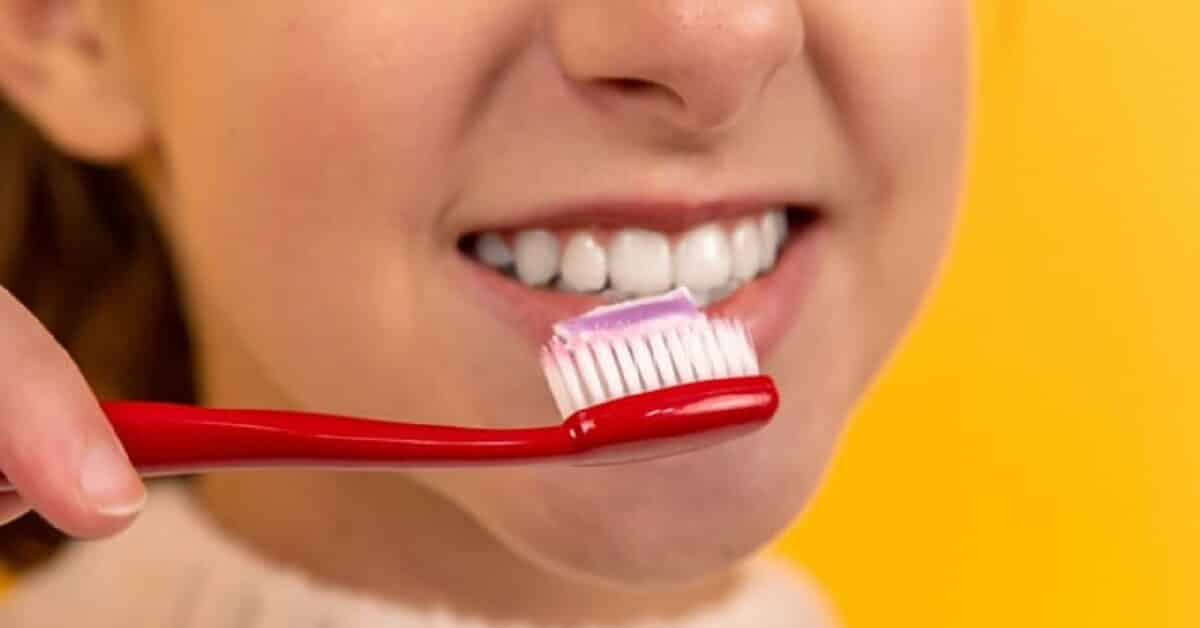
How harmful is it to swallow toothpaste?
You should avoid swallowing toothpaste because it contains chemical ingredients that may harm your health or even cause death if ingested in large amounts.
Two of the most potentially toxic ingredients are fluoride and triclosan.
We shall examine the toxicity of these two chemicals in detail.
Is fluoride in toothpaste toxic?
Yes, fluoride in toothpaste is potentially toxic. But it is only toxic if you swallow significant amounts at once or small amounts regularly over time.
Swallowing a tube of fluoridated dentifrice could cause acute toxicity and death (see YouTube video).
Fluoride toxicity: Dental fluorosis
Young children are generally more likely than older children and adults to swallow significant amounts of toothpaste while brushing.
Swallowing amounts of fluoridated dentifrice over time can cause a condition known as dental fluorosis in young children (age≤8 years) developing permanent teeth.
The condition, characterized by visible changes in the appearance of the teeth, is more often than not only of cosmetic concern.
Children with fluorosis may have enamels with white flecks or specks in mild cases; striations, blotches, brown spots, or pitting in more severe cases.
Generally, infants and children younger than three should use non-fluoridated swallowable toothpaste. But your healthcare provider may recommend fluoridated toothpaste for children aged 0-2 years if they determine the child has a high risk of dental caries.
Children aged 0-6 years may only use fluoridated dentifrice under close adult supervision.
Adult caregivers should ensure that children aged 0-2 years only use grain-sized or a “smear” of toothpaste (0.1g).
Older children (2/3 years-6 years) may use a pea-sized (0.25g) amount.
You should ensure that your child does not swallow fluoridated toothpaste. Show the child how to spit instead of swallowing the dentifrice.
Fluoride toxicity: Skeletal fluorosis
In rare cases, chronic excessive fluoride ingestion may also cause skeletal fluorosis.
According to Krishnamachari (1986), skeletal fluorosis is a chronic bone and joint disease caused by the accumulation of fluoride in the system. The accumulation is usually due to chronic exposure to contaminated water (fluoride-contaminated groundwater) and food sources.
Zohoori and Duckworth (2017) reported that skeletal fluorosis may result from chronic fluoride exposure during the childhood years of bone growth.
Krishnamachari (1986) also reported that the condition occurs in children.
It may also conceivably occur due to chronic ingestion of dentifrice in cases of pica (read more about pica here).
Skeletal fluorosis is characterized by bone mineral accretion (accumulation of bone minerals) abnormalities and resorption of bone tissue (Krishnamachari, 1986).
It causes weak or deformed weight-bearing bones, stiff or immobile joints, pain, muscle impairment, and associated degrees of osteosclerosis, osteomalacia, and osteoporosis.
According to Ullah and associates (2017), skeletal fluorosis may also cause:
- Renal (kidney) damage
- Gastrointestinal tract (GIT) problems, such as non-ulcer dyspepsia
- Central nervous system degenerative changes associated with numbness, pain, and muscle spasm; impaired memory and learning functions
- Fetal defects: May cause teratogenic effects, chromosomal aberrations, and fetal bone developmental issues.
Some research studies indicated that long-term exposure to drinking water with fluoride in the recommended concentration levels of less than 0.5 mg/l may affect thyroid hormone levels (Kheradpisheh et al., 2018).
The authors recommended household water purification for patients with hypothyroidism (low thyroid function).
However, Barberio and colleagues (2017) found no association between drinking fluoridated water and the incidence of impaired thyroid function or diagnosis of a thyroid condition.
How much toothpaste should I use?
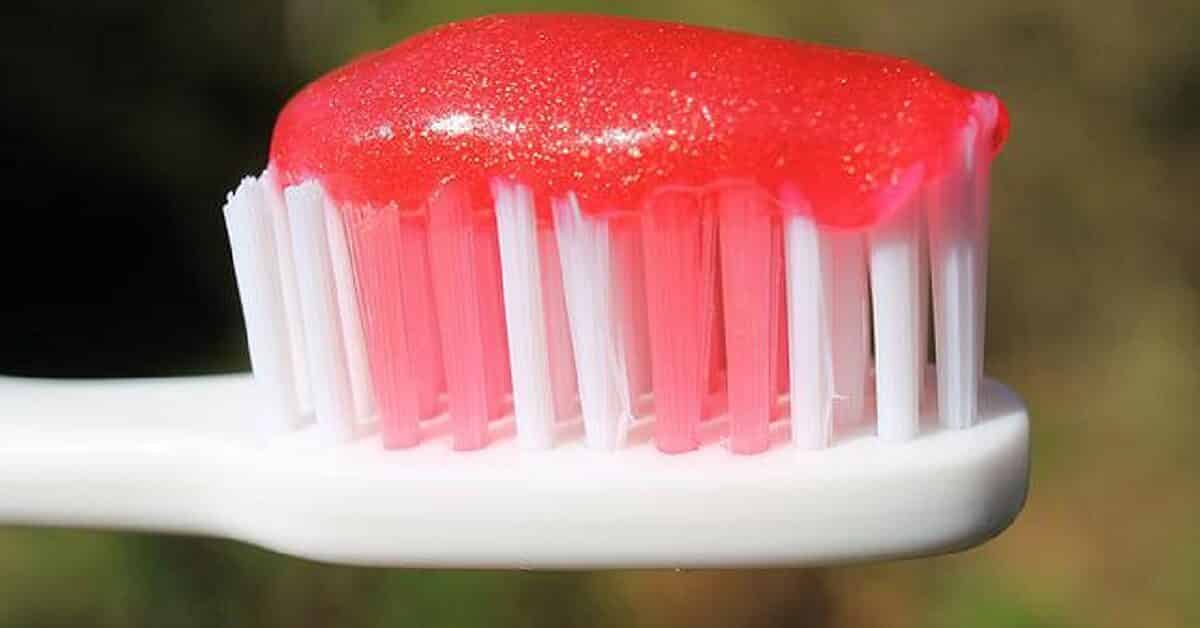
According to the American Dental Association (ADA), although brushing with fluoridated toothpaste reduced the incidence of caries in children, overdosing should be avoided.
The National Academies of Sciences, Engineering, and Medicine Health and Medicine Division (HMD) recommended 0.02 to 0.10 mg/kg/day (average 0.05mg/kg/day) of fluoride for children older than 6 months.
Experts recommend limiting the amount of toothpaste a child (6mths-2 years) uses for brushing to a rice grain-size or “smear” (0.1g).
Experts also recommend a pea-sized amount (0.25g) for children aged 2 or 3 years to 6 years.
Using the recommended amount of toothpaste for brushing reduces the risk of fluoride overdose if your child swallows the toothpaste.
However, fluoride may have acute toxic effects when ingested at much higher doses than recommended.
How much toothpaste can kill you?
According to Ullah and associates (2017), acute toxicity may occur at intake levels of 5-8 mg/kg body weight and may be fatal.
The authors reported that sodium fluoride (NaF) tends to be more toxic because it is more soluble and releases more fluoride into the system than other fluorides, such as calcium fluoride (CaF2).
The relative safety of CaF2 has led to increased interest in its use in dentifrices, oral care products, and supplement production in place of NaF.
What happens if you eat a tube of toothpaste
The YouTube video below explains why you shouldn’t eat a tube of toothpaste:
Fluoride overdose symptoms: Acute toxicity
Swallowing a large amount of fluoridated toothpaste is an emergency that requires prompt attention by a medical professional.
Young children are more likely than adults to purposely or accidentally swallow toothpaste that contains fluoride. They are also more likely to suffer serious effects. Dentists, therefore, recommend that children not at risk of dental caries use non-fluoridated swallowable dentifrices.
The signs and symptoms of acute fluoride toxicity that may occur if you or your child swallow a substantial amount of toothpaste include the following, according to Ullah and colleagues (2017):
- Gastric disturbances may include abdominal pain, nausea, diarrhea, vomiting with blood, and hypocalcemia (low blood calcium); Stomach disturbances may be associated with generalized or localized muscle tetany
- Hypotension, bronchospasm, fixed and dilated pupils (FDPs), and hyperkalemia (high potassium level)
- Fluoride toxicity may be associated with ventricular arrhythmias (dangerous abnormal heartbeat rhythm) and cardiac arrest.
- Loss of body fluid may cause electrolyte imbalance, hypovolemic shock (severe blood or fluid loss that disrupts normal heart function), and low blood pressure
- Persistent polyuria (excessive peeing) resembling diabetes insipidus (a condition characterized by constant thirst and excessive peeing) may occur in some cases
- Acute polyuric renal (kidney) failure may cause death
- Progressive metabolic and respiratory acidosis (too much acid in body fluids) associated with renal and respiratory system failure may occur; It may lead to coma, convulsions, and death
What to do in case of fluoride poisoning?
Do not delay seeking medical help. While help is on the way, you may call your local poison help hotline for instructions on first aid you may give the victim.
- Poison Help line U.S.: 1-800-222-1222;
- Poison Help line Canada: See the phone numbers here
Make sure that you answer questions accurately to help the poison expert determine the best first aid assistance to offer the victim. They may ask questions about the victim’s age and current state.
The poison expert may want information about the dentifrice brand, quantity swallowed, and how long ago the incident occurred. They may ask you to get the toothpaste packaging and read aloud the ingredients to help them assess potential harm.
Keep in mind that dentifrices that doesn’t contain fluoride and triclosan may contain other potentially harmful substances.
Triclosan toxicity
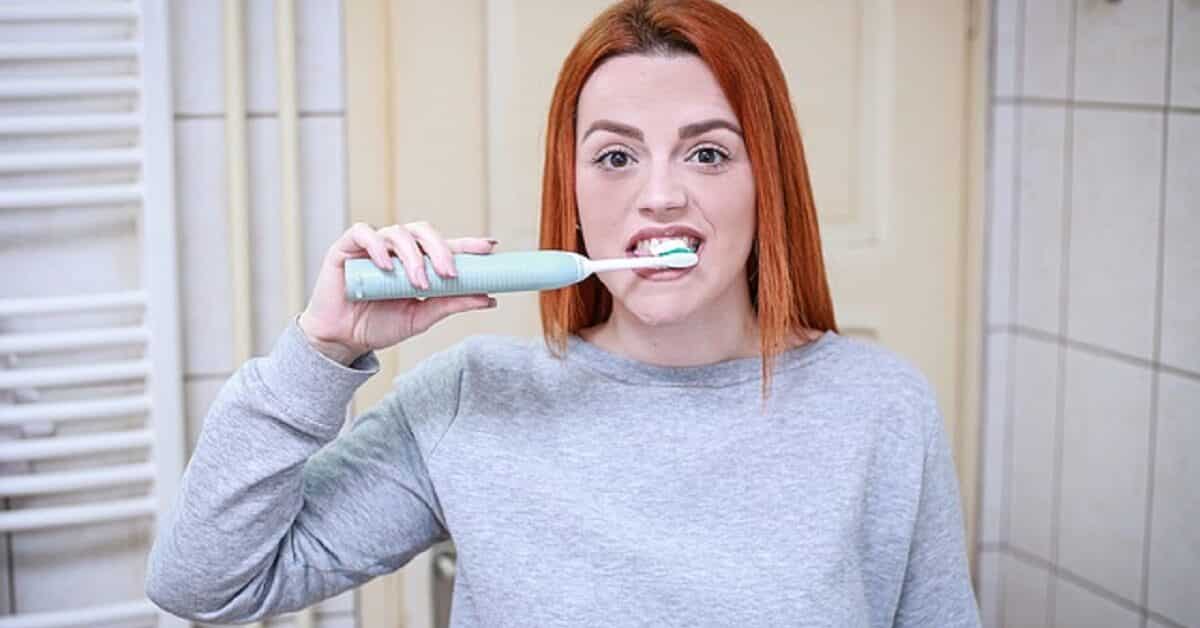
Manufacturers add triclosan (TCS) to toothpaste and other personal care products for its antimicrobial activity.
The FDA banned the use of the compound in OTC consumer antiseptic hand and body wash products (soaps) back in September 2016.
In 2017, the agency issued a final rule prohibiting manufacturers from using triclosan in “certain” OTC healthcare antiseptic products intended for use by “health care professionals in a hospital setting or other health care situations outside the hospital.”
Such products included hand washes, hand rubs, surgical hand scrubs, and patient antiseptic skin preparations.
The decision was due to concerns about the safety and effectiveness of triclosan. There were also concerns that widespread use in soaps may cause antibiotic-resistant pathogens and hormonal effects.
However, triclosan was still allowed in toothpaste due to reported evidence that it may prevent gingivitis.
American consumers continue to be exposed to significantly high concentrations of triclosan in various manufactured products while experts conduct studies on the health effects (Weatherly and Gosse, 2018; Zhang and associates, 2022).
TCS is absorbed through the skin, the linings of the mouth (oral mucosa), and the gastrointestinal tract into the systemic circulation (Chedgzoy et al., 2002; Lin, 2000; Sandborgh-Englund et al., 2006).
It is detectable in various human tissues and body fluids, including the milk of nursing mothers (Weatherly and Gosse, 2018; Allmyr et al., 2006).
Animal studies suggested that exposure to triclosan may lower thyroid hormone levels. Studies also suggested that long-term exposure may be associated with skin cancer.
Toothpaste ingredients
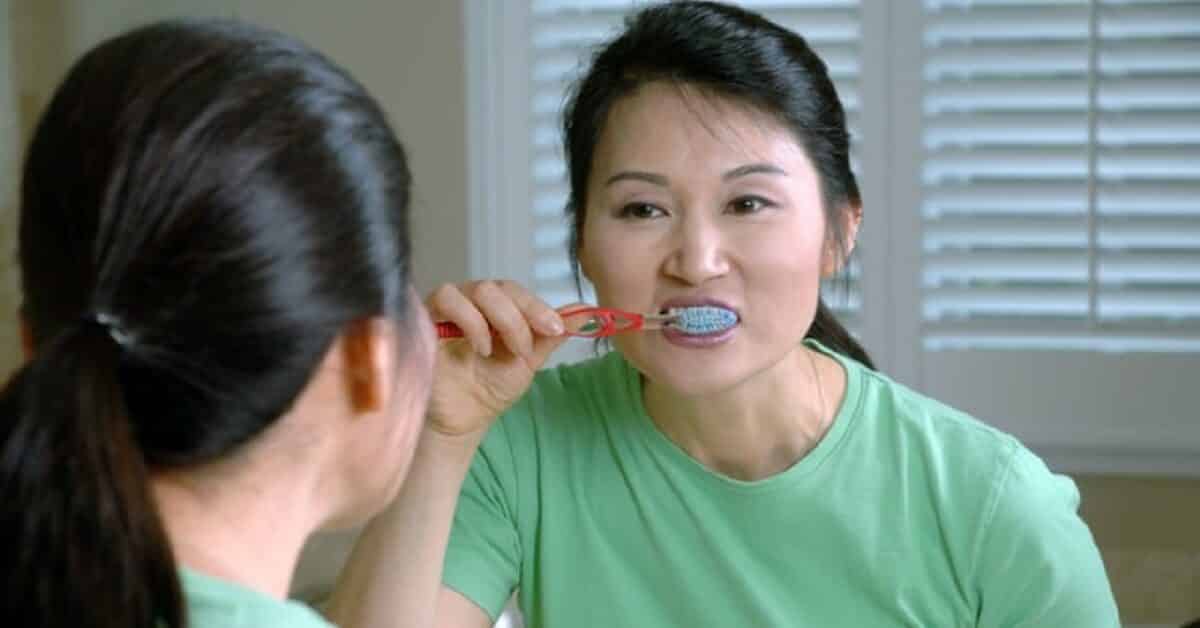
Here is a comprehensive list of ingredients you may find in toothpaste:
Toothpaste brands have different ingredients and proportions. But most contain similar classes of ingredients that serve related purposes, including cleaning, whitening, and providing anti-cavity protection.
Prescription dentifrice contains ingredients added for specific purposes, such as antimicrobial activity, tartar control, and teeth whitening.
Prescription toothpaste may be formulated to fight tooth decay in susceptible individuals. They contain higher concentrations of minerals, such as fluoride, phosphate, and calcium, than standard dentifrice.
The high mineral content helps strengthen the enamels.
There are also specialty and prescription toothpastes for sensitive teeth. Tooth sensitivity is often caused by the weakening of the enamel.
The enamel is the hard layer that protects the softer tissues, including the dentin. Weakened enamel causes pain or discomfort when you consume foods or drinks that are cold, hot, acidic, or sugary.
Toothpaste may contain ingredients, such as stannous fluoride, potassium nitrate, and strontium chloride, that help desensitize or alleviate sensitivity.
Standard dentifrice formulation to clean, whiten teeth, and prevent cavities may contain the following ingredients or classes of ingredients:
Fluoride and remineralizing agents
Fluoride compounds act as anti-caries/anti-cavity agents in toothpaste.
They work with calcium phosphates to protect tooth enamel against mineral loss. They also help fortify or remineralize already weak areas in the tooth enamel.
Fluoride compounds used in dentifrices include:
- Sodium fluoride (NaF): The compound is also used in water fluoridation in the U.S.
- Stannous fluoride (tin difluoride, SnF2): Stannous fluoride has the advantage of having antibacterial, anti-hypersensitivity properties, but it may cause teeth staining
- Sodium Monofluorophosphate (SMFP, Na2PO3F) is also an anti-caries (tooth decay, anti-cavity) agent.
Other remineralizing agents include:
- Novamin
- Calcium phosphate compounds that may be used in combination with fluorides include:
- –Tricalcium phosphate (TCP)
- –Amorphous calcium phosphate (ACP)
- —Hydroxyapatite (HAP)
Non-prescription or over-the-counter (OTC) toothpastes range from 1000 ppm to 1500 ppm (parts per million) of fluoride. Toothpastes containing 1350ppm-1500ppm are more effective for preventing tooth decay.
Prescription dentifrices may have as high as 5000 ppm.
The American Dental Association (ADA) only awards its seal of acceptance or approval to dentrifices that have fluoride.
However, fluoride is toxic when ingested in high doses.
Abrasives
Abrasives are toothpaste ingredients that remove food, non-food particle, stains, and other materials lodged in between the teeth and the surface of the enamel.
As the word “abrasive” suggests, they act through abrasion (physical action by friction), scrubbing, and polishing.
They usually don’t play a direct role in preventing decay, caries, or gum diseases. However, they play an indirect role by removing decaying particles that contribute to caries and gum disease.
An abrasive must combine effectiveness with a gentle non-wearing effect on the tooth surface to prevent progressive damage to the enamel.
The most commonly used abrasives in toothpaste are:
- Carbonates: Calcium carbonate, magnesium carbonate, sodium bicarbonate (baking soda)
- Dehydrated silica gels, zirconium silicate
- Hydrated aluminum oxides
- Phosphates: Calcium pyrophosphate, dicalcium phosphate, sodium metaphosphate
- Charcoal
Polyethylene (plastic microbeads) is also used as an abrasive agent, but it is banned in the U.S. and Canada.
Most abrasives used in modern dentifrices have a gentle but effective abrasive action. But dentists advise not to press your brush too hard against your teeth to prevent damage to the tooth surface and gum and gumline.
Abrasives constitute about 20-40% of total dentifrice ingredients.
Flavors and sweeteners
Manufacturers add flavors and sweeteners to dentifrices to mask the unpleasant taste of some of the ingredients, such as detergents.
As we mentioned earlier, the sweet taste of many toothpaste brands might have raised concerns that they contain sugar calories.
But dentifrice manufacturers avoid adding sugar for taste because it promotes tooth decay. They use artificial sweeteners instead.
The most commonly used flavors are:
- Peppermint
- Spearmint
- Cinnamon
- Fruit flavors
- Wintergreen
- Menthol
Sweeteners also include:
- Xylitol
- Calcium or sodium saccharin
- Aspartame (artificial sweetner)
- Sorbitol
Humectants, texturizers, and thickeners
Humectants are added to packaged products to act as water absorbers or moisture retainers.
Moisture retention helps maintain the consistency and texture of toothpaste. It also prevents the constituents from separating into solid and liquid parts.
Some of the more commonly used humectants are:
- Glycerin
- Propylene glycol
- Sorbitol
- Water
- Pentatol
- Xylitol
- Polyethylene glycol (PEG)
Thickeners added to dentifrices include cellulose, carrageenan (also used in chewing gums), and titanium dioxide (code: CI 77891).
Humectants may constitute 20-70% of toothpaste.
Detergents
Detergents (soaps, foaming agents, or surfactants) that may be added to toothpaste include:
- Sodium lauryl sulfate (SLS), a lathering or foaming agent
- Sodium lauroyl sarcosinate
- Dimethicone (polydimethylsiloxane), a silicone-based polymer with anti-foaming properties
Binding agents
- Alginate
- Gums
- Synthetic celluloses, such as carboxymethyl cellulose and hydroxyethyl cellulose
- Glycerin and sorbitol also function as binders
Binders may constitute about 2% of toothpaste.
Coloring agents
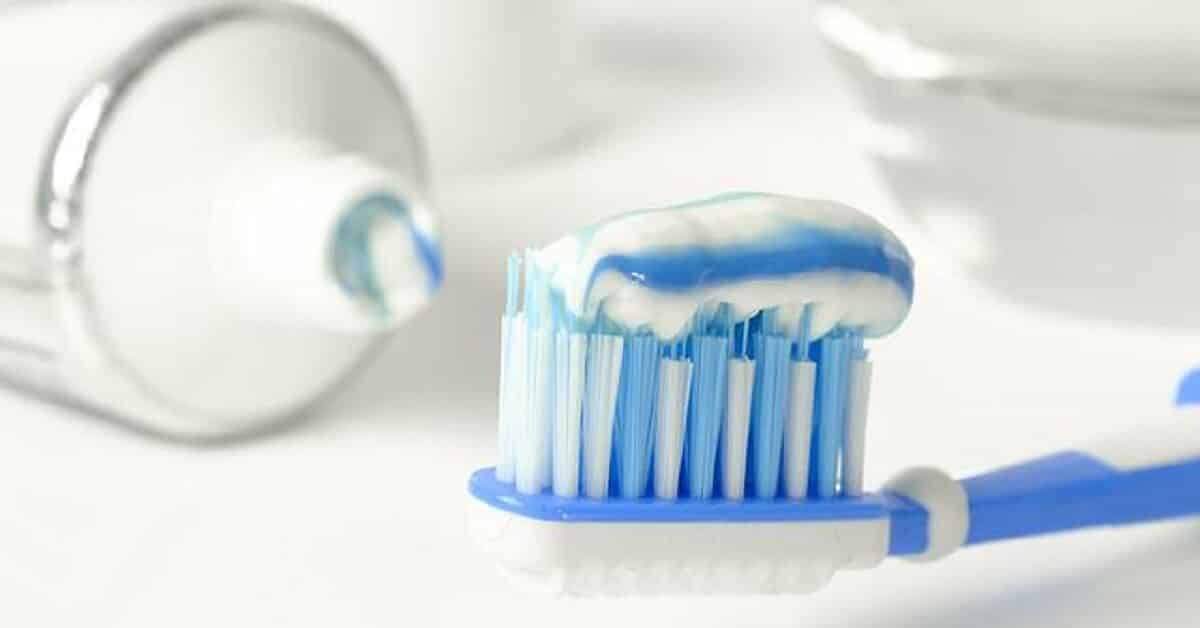
Widely used coloring agents include:
- Titanium dioxide (CI 77891) imparts white color
- Aluminum hydroxide imparts white color, but it is primarily a buffering agent.
- Xanthan gum
- Other FDA-approved color additives
Preservatives: antimicrobials
Preservatives prevent the growth of pathogenic microbes and those that may reduce the shelf-life of toothpaste:
- Sodium benzoate
- Triclosan
- Methylparaben
- Ethylparaben
- Chlorhexidine (chlorhexidine gluconate or chlorhexidine acetate)
Alcohols used as preservatives also include:
- Specially denatured (SD) alcohol
- Benzyl alcohol (phenylmethanol): Also known as phenylcarbinol or benzenemethanol
- Coconut oil (contains calories)
Denatured alcohols are potentially toxic when ingested in significant amounts.
Whitening, anti-staining, or bleaching agent
Whiteners help to remove stains that discolor teeth.
The most widely used include:
- Peroxides, such as calcium peroxide, carbamide peroxide, hydrogen peroxide
- Citroxain
- Covarine
- Sodium hexametaphosphate (SHMP)
- Sodium triphosphate (STP), also known as sodium tripolyphosphate (STPP), or pentasodium triphosphate, is an anti-staining agent
Buffering agents
Buffering agents are used to regulate the pH of toothpaste so that it does not become too alkaline (pH>7) or acidic (pH<7). Excessively low pH (acidic) can damage tooth enamel.
Commonly used buffering agents are:
- Aluminum hydroxide
- Sodium hydroxide
- Zinc Citrate
Anti-sensitivity ingredients
These include:
- Stannous fluoride
- Potassium nitrate
- Strontium chloride
- Arginine is an amino acid that may help manage teeth sensitivity

